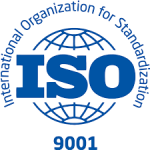To obtain ISO certification in India, you need to follow a series of steps. The process typically involves the following key stages:
1. Determine the ISO Standard: Identify the specific ISO standard that is relevant to your organization and industry. The ISO offers a wide range of standards covering various areas such as quality management (ISO 9001), environmental management (ISO 14001), information security management (ISO 27001), etc.
2. Understand the Requirements: Familiarize yourself with the requirements outlined in the chosen ISO standard. Review the standard thoroughly and identify the necessary changes and improvements required within your organization to meet the standard’s criteria.
3. Gap Analysis: Conduct a gap analysis to assess the existing processes and systems in your organization against the requirements of the chosen ISO standard. This step helps identify the areas that need improvement and the extent of work required to meet the standard’s requirements.
4. Develop an Implementation Plan: Create a detailed plan outlining the steps, resources, and timeline for implementing the necessary changes. Assign responsibilities to the relevant individuals or teams within your organization to ensure smooth execution.
5. Implement the Required Changes: Start implementing the changes identified during the gap analysis. This may involve revising existing procedures, documenting new processes, training employees, and establishing necessary controls to meet the standard’s requirements.
6. Internal Audits: Conduct internal audits to assess the effectiveness of the implemented changes and identify any remaining gaps or areas that need improvement. Internal audits help ensure that your organization is on track to meet the ISO standard’s requirements.
7. Management Review: Hold periodic management reviews to evaluate the progress of the implementation process, address any identified issues, and ensure that the necessary resources and support are provided.

8.Selection of Certification Body: Choose an accredited certification body or registrar to conduct an external audit of your organization’s management system. The certification body should be accredited by an authorized accreditation body.
9.External Audit: The certification body will conduct an on-site audit of your organization to assess the compliance of your management system with the ISO standard’s requirements. The audit process typically involves a stage 1 audit (document review) and a stage 2 audit (on-site assessment).
10. Certification Decision: Based on the findings of the external audit, the certification body will make a decision regarding the issuance of the ISO certification. If your organization meets the standard’s requirements, you will be awarded the ISO certification.
11. Surveillance Audits: After certification, the certification body will conduct periodic surveillance audits to ensure that your organization continues to meet the ISO standard’s requirements. These audits are typically performed annually or as per the certification body’s requirements.
It’s important to note that the ISO certification process can be complex, and it’s recommended to seek assistance from experienced consultants or professionals who are well-versed in ISO standards and certification procedures. They can guide you through the process and provide valuable expertise to ensure a successful certification outcome.

